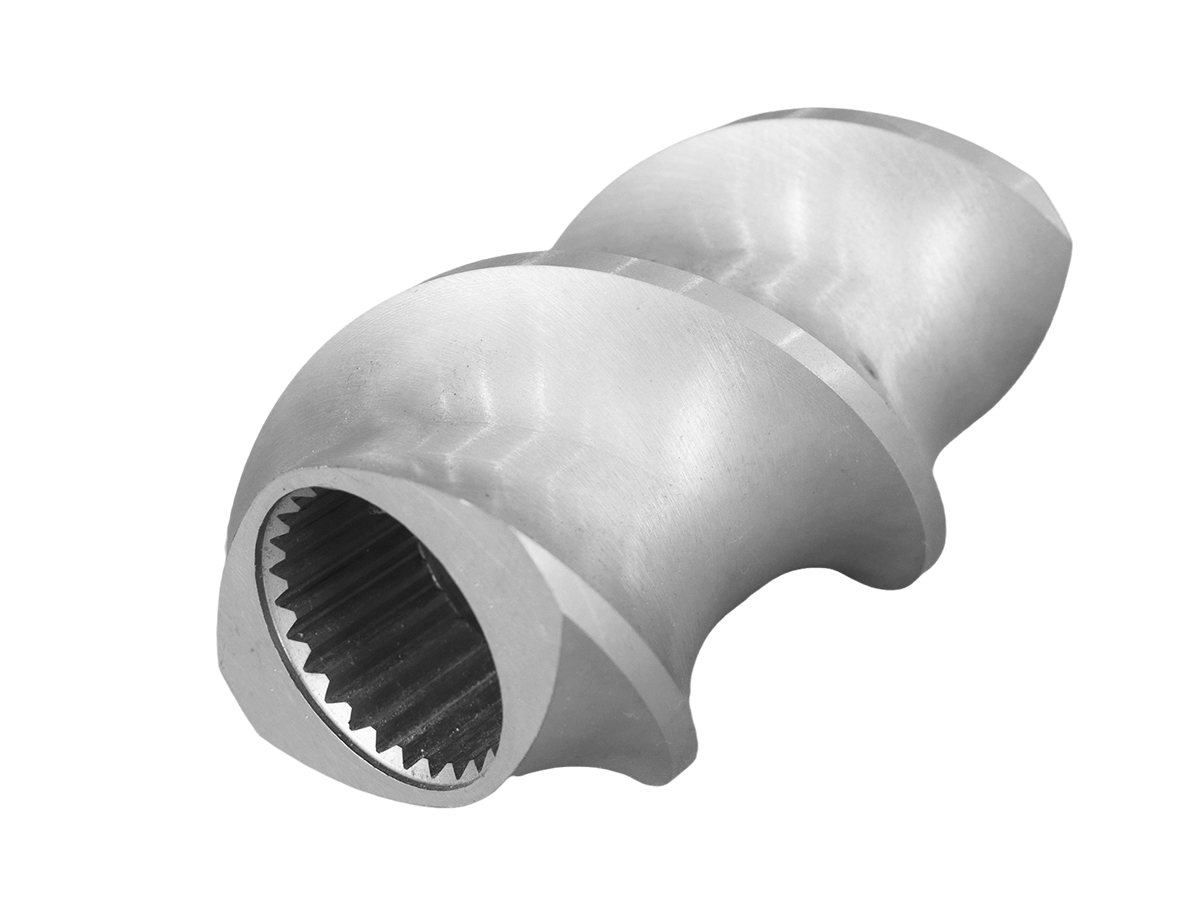



The transition element is mainly used between two different cross-sectional elements to minimize the non-wiping area and avoid the residue and accumulation of materials. Some transition elements also have a certain conveying and dispersion effect.
Common transition elements are used in:
Between SK two-flighted element and two-flighted conveying element;
Between single-flighted and two-flighted conveying elements;
Between ZME mixing disc and two-flighted element;
Between TME toothed disc and the two-flighted element.
Model: Φ 18 mm~Φ 400 mm
Material: WR5/WR7/WR13/Nickel based alloy
Performance: Wear resistant and corrosion-resistant
WR5: The carbide of WR5 is mainly composed of small dispersed spherical vanadium carbide, supplemented by an appropriate amount of chromium carbide. It has good wear resistance, excellent impact performance, and good anti peeling performance. Its service life is about three times that of 6542 material.
WR7: The carbides in WR7 are mainly small dispersed spherical vanadium carbide and chromium carbide, with a large number of carbides and the highest comprehensive wear and corrosion resistance, making it a high-end alternative to WR5.
WR13: It has both wear and corrosion resistance, suitable for the battery slurry industry.
Nickel based alloy: has good wear and corrosion resistance
• Full kneading transition
• No dead corners
Copyright © Ma'anshan Huawei Metallurgical Machinery Co., Ltd SITEMAP Technical Support:Chengguang Network